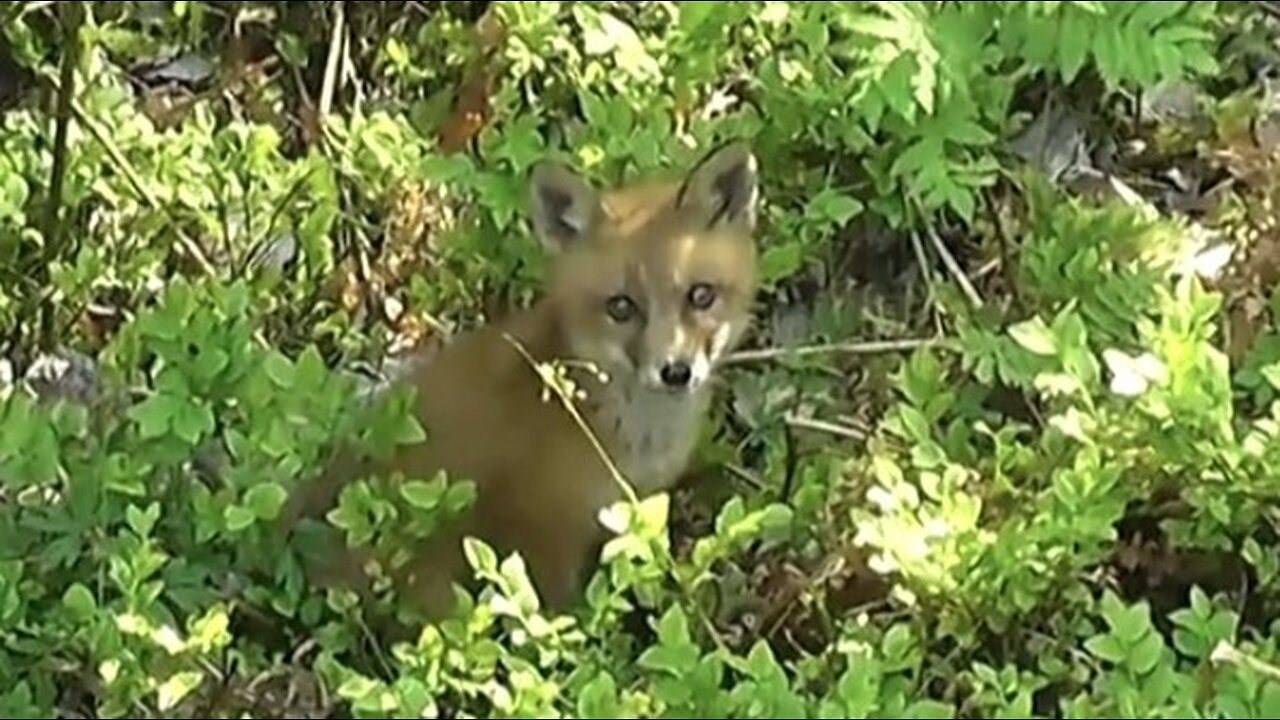Premium Only Content

"The Fox: Nature’s Clever Survivor"
Foxes are small to medium-sized, omnivorous mammals belonging to the family Canidae, which also includes dogs, wolves, and other canines. The most common and widely known species is the red fox (Vulpes vulpes), but there are over 30 species of foxes spread across different regions of the world.
Physical Characteristics
Foxes generally have a slender, agile body, bushy tail, and a narrow, pointed face with large ears. They have sharp, curved teeth that are well-suited for their omnivorous diet. Most fox species have thick fur, which provides insulation during cold weather. Their coat color varies based on species and location, ranging from the red or orange-brown of the red fox to the silver-gray of the arctic fox.
Size: Foxes range from 18 to 35 inches (46–90 cm) in body length, with their tails adding another 12 to 22 inches (30–56 cm). They typically weigh between 5 to 14 kilograms (11 to 31 pounds), with the red fox being on the larger end of this range.
Adaptations: Foxes are highly adaptable animals and thrive in various environments, including forests, grasslands, mountains, and urban areas. Their sharp hearing and excellent night vision help them hunt in the dark. Their bushy tails, called "brushes," help with balance and warmth.
Behavior and Social Structure
Foxes are primarily solitary animals, though they do sometimes form small family groups. They are territorial and mark their territory with scent. They are crepuscular, meaning they are most active during dawn and dusk.
Foxes communicate using various vocalizations, body language, and scent marking. They are known to produce a wide range of sounds, from yelps and growls to a distinctive scream-like bark.
Habitat and Range
Foxes are one of the most widely distributed mammals in the world, found on every continent except Antarctica. The red fox, in particular, has the widest range of any carnivore, inhabiting parts of North America, Europe, Asia, and even Australia (where it was introduced). Other species, like the fennec fox (Vulpes zerda), are adapted to specific environments, such as the deserts of North Africa.
Diet
Foxes are opportunistic feeders, meaning they eat whatever is available. Their diet mainly consists of small mammals such as rodents, birds, insects, and fruit. They also scavenge human food waste, particularly in urban areas.
In colder climates, foxes have been known to cache food, burying surplus food for future use during leaner times.
Reproduction
Foxes typically mate in winter, and after a gestation period of about 50–55 days, the female, or vixen, gives birth to a litter of kits (usually between 2 and 12). The kits are born blind and helpless, relying entirely on their mother for the first few weeks. They begin to open their eyes after about two weeks and start venturing out of the den at around four weeks.
Both parents, and sometimes older siblings, help care for the young. By autumn, the kits are usually independent, and many leave to establish their own territories.
Fox Species
Some notable species include:
1. Red Fox (Vulpes vulpes): The most widespread fox species, known for its reddish coat and adaptability.
2. Arctic Fox (Vulpes lagopus): Found in the Arctic tundra, with a thick white coat that changes to brown in summer.
3. Fennec Fox (Vulpes zerda): A small desert fox with large ears to dissipate heat, found in the Sahara and North Africa.
4. Gray Fox (Urocyon cinereoargenteus): Common in North America, known for its ability to climb trees.
5. Kit Fox (Vulpes macrotis): A small fox species native to desert regions of the southwestern United States and Mexico.
Ecological Importance
Foxes play a significant role in controlling populations of small mammals and pests, which helps maintain ecological balance. Their scavenging habits also contribute to the decomposition process of organic materials.
Relationship with Humans
Foxes have a complex relationship with humans. In some cultures, they are revered in folklore and mythology, often portrayed as clever and cunning animals. However, in rural areas, they may be viewed as pests for preying on livestock, such as chickens. Fox hunting, though controversial, was once a popular sport in parts of Europe.
In urban areas, foxes have adapted to human environments, foraging in gardens, parks, and trash bins. Urban foxes are often less wary of humans, although they generally avoid direct interaction.
Threats and Conservation
While foxes are highly adaptable, they face threats from habitat destruction, hunting, and, in some regions, diseases such as rabies. However, most species are not endangered, and their populations remain stable or even increasing in some areas. Conservation efforts for certain species, like the Arctic fox, focus on mitigating the effects of climate change and preserving their natural habitats.
-
 2:29:38
2:29:38
TheSaltyCracker
8 hours agoPiss Off War Pigs ReeEEeE Stream 03-09-25
165K313 -
 1:03:55
1:03:55
Sarah Westall
9 hours agoCanada Media Mind Control to increase Assisted Suicide, Confusion & Enslavement w/ Jasmin Laine
58.7K11 -
 2:41:11
2:41:11
Canal Paulo Figueiredo
2 days agoPedro Valente Debunks The Myths of Jiu-Jitsu History
50.1K8 -
 2:01:46
2:01:46
vivafrei
9 hours agoEp. 254: China to Pay $24 BILLION? Who Owns Embryos? Tulsi was RIGHT on Syria! Prorogation & MORE!
153K125 -
 3:40:55
3:40:55
MyronGainesX
19 hours ago $20.53 earnedFormer Fed Explains Gabby Petito's Murder
82K38 -
 2:18:05
2:18:05
Nerdrotic
9 hours ago $9.54 earnedInvestigations into the Unknown with Micah Hanks | Forbidden Frontier #093
78.4K16 -
 18:54
18:54
The Rubin Report
14 hours agoHow One Woman Outsmarted Pornhub & Exposed Its Dark Secrets | Laila Mickelwait
160K132 -
 LIVE
LIVE
Major League Fishing
5 days agoLIVE! - Bass Pro Tour: Stage 3 - Day 4
889 watching -
 1:05:28
1:05:28
Sports Wars
16 hours agoLebron GOES OFF Over Bronny Hate, Pereira LOSES Belt To Ankalaev At UFC 313, Xavier Worthy Arrested
108K19 -
 10:27
10:27
Tactical Advisor
1 day agoDMR or SPR for Civilian Use?
104K6